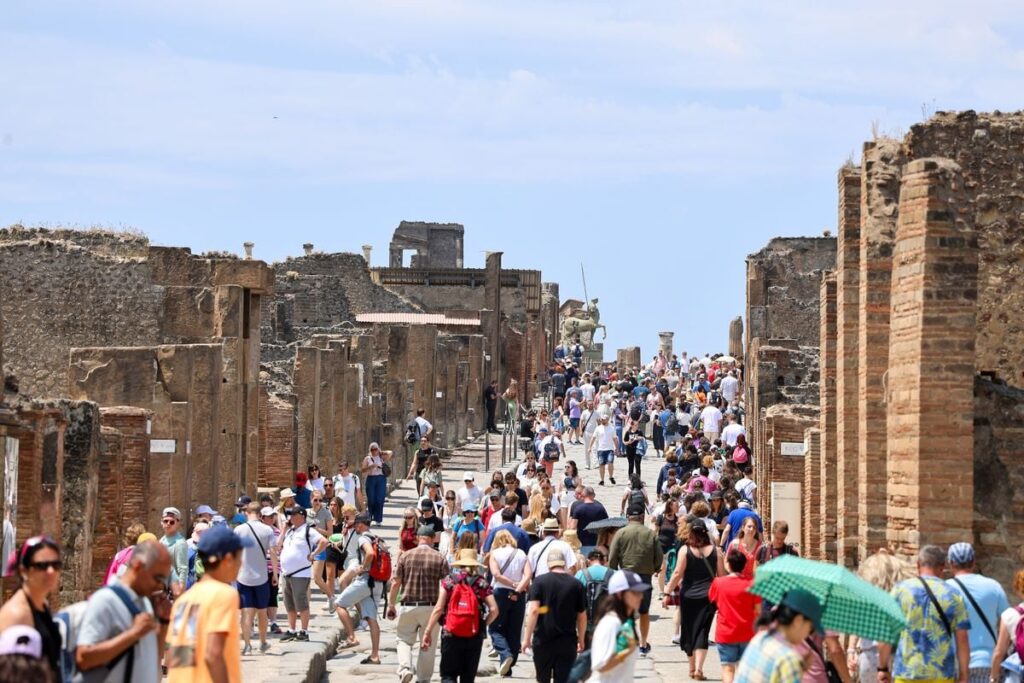A crowd of tourists gathers on the main street at Pompeii.
Marco Cantile / LightRocket via Getty Images
The ancient city of Pompeii, which was preserved under layers of ash and pumice after the eruption of Mount Vesuvius in 79 C.E., is introducing a new cap on daily visitors.
In an effort to prevent overcrowding and protect the city’s ruins, the Pompeii Archaeological Park announced that it will allow no more than 20,000 tourists to enter the site each day. Beginning on November 15, visitors will need a personalized ticket with their full name on it that’s tied to a specific time slot.
For many years, Pompeii has captivated Italy-bound travelers hoping to get an up-close glimpse of ancient Roman life. But last summer, the site attracted a record-breaking four million tourists—up 33.6 percent from the previous year, according to Reuters’ Alvise Armellini. On one summer day, a whopping 36,000 visitors came to check out the ancient site.
Most travelers won’t need to worry too much about the new crowd restrictions. A spokesperson for the park tells Reuters that the site hit 20,000 visitors primarily during free entry days, which take place on the first Sunday of each month. On regular days, visitor numbers reached 20,000 only three or four times.
An average of 16,700 people visited the park every day in May, which was the busiest month of 2024, according to United Press International’s Mike Heuer. Pompeii hosted a total of 517,000 tourists that month.
“We are working on a series of projects to lift the human pressure on the site, which could pose risks both for visitors and the heritage [that is] so unique and fragile,” says Gabriel Zuchtriegel, the archaeological park’s director, in a translated statement, per the Associated Press.
In recent years, mischievous tourists have made headlines for damaging or vandalizing ancient Italian sites on several occasions. Over the summer, two unconnected tourists were caught on separate occasions carving initials into excavated homes at Pompeii.
The daily cap will prevent the number of tourists at Pompeii from growing, making the crowds easier for staff and security to manage. Park officials also hope that visitors will get excited about nearby sites that are connected to the park. Free bus services are now available to shuttle tourists between such sites.
“The measures to manage flows and safety and the personalization of the visits are part of this strategy,” says Zuchtriegel in the statement, per the AP. “We are aiming for slow, sustainable, pleasant and non-mass tourism—and above all, [tourism that is] widespread throughout the territory around the UNESCO site, which is full of cultural jewels to discover.”
The introduction of the new entry limit follows similar changes at other historic Italian sites dealing with overcrowding. In the spring, the city of Venice began a trial of a controversial day-tripper entrance fee in hopes of keeping numbers down. This summer, officials in Rome announced plans to charge an admissions fee at the Trevi Fountain.


